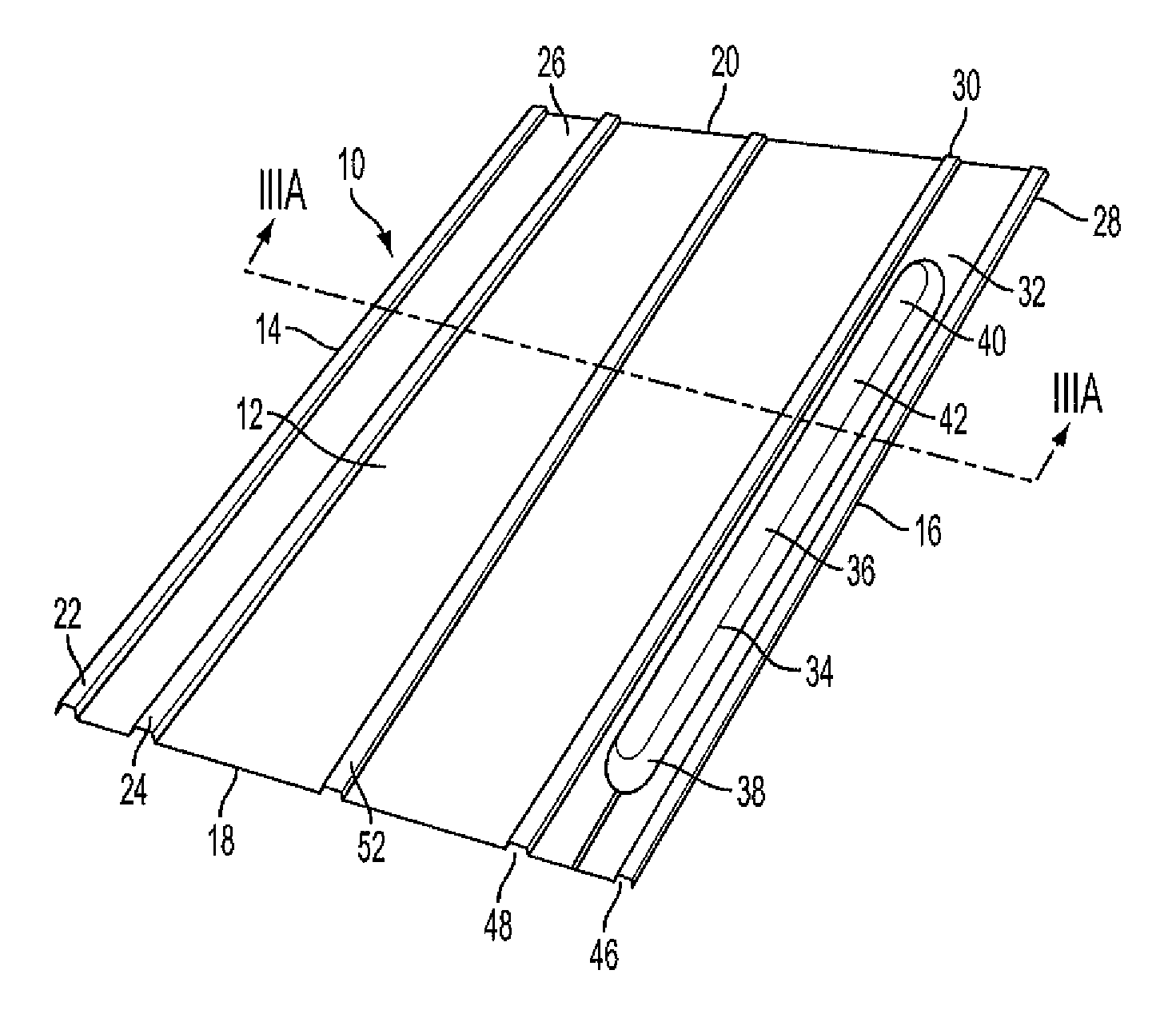Roof panel for supporting PV modules
a photovoltaic module and roof panel technology, applied in the direction of heat collector mounting/support, building repairs, lighting and heating equipment, etc., can solve the problems of pv module efficiency decline, pv module aesthetics are not good enough to make commercially feasible, and the mounting system is too large and expensive for practical application on a residential level, etc., to achieve better control of air flow, improve the aesthetics of the pv module array, and improve the effect of heigh
- Summary
- Abstract
- Description
- Claims
- Application Information
AI Technical Summary
Benefits of technology
Problems solved by technology
Method used
Image
Examples
Embodiment Construction
[0059]As particularly shown in FIGS. 1 and 3, disclosed herein is a panel 10 that serves as a roof cover that can be used in combination with conventional roof coverings such as asphalt shingles, tiles, slate and other materials to provide an integrated roof cover that supports an array of PV modules. The PV module array is defined as the organization of PV modules in one of more lateral rows and one or more vertical columns. The PV module array is designed in accordance with the power requirements for the application, the available roof area, the orientation of the roof, requirements of local building codes, and other factors concerning the design of PV module arrays as is known in the art.
[0060]The panel 10 includes a first side 12 that is defined between a first edge 14 and a second edge 16 that are oppositely disposed from each other on panel 10. The first side 12 of panel 10 is also defined between a third edge 18 and a fourth edge 20 that are also oppositely disposed from each...
PUM
 Login to View More
Login to View More Abstract
Description
Claims
Application Information
 Login to View More
Login to View More - R&D
- Intellectual Property
- Life Sciences
- Materials
- Tech Scout
- Unparalleled Data Quality
- Higher Quality Content
- 60% Fewer Hallucinations
Browse by: Latest US Patents, China's latest patents, Technical Efficacy Thesaurus, Application Domain, Technology Topic, Popular Technical Reports.
© 2025 PatSnap. All rights reserved.Legal|Privacy policy|Modern Slavery Act Transparency Statement|Sitemap|About US| Contact US: help@patsnap.com



